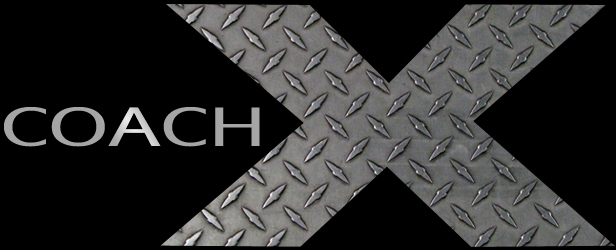
elitefts™ Sunday Edition
-Scott
Geared power development?
First question: WHY?
Second: What's your objective?
Lastly: Who develops power using eight reps?
I'd modify everything. Since you are a reader of this site, which has some of the strongest humans in the world, you haven't learned anything. So I could go on and on. First, the number of reps is dependent on the load used. After a certain number of reps at a certain percent, bar speed slows down and power decreases. (See Prilepin's Chart). Also, most believe that velocity and force are inversely related. However, as Dr. Squat (aka: Fred Hatfield) and Cal Dietz (a genius) have stated, due to the Stretch Shortening Cycle (SSC), the percents 55-80% are the optimal relationship between both. In other words, high velocity and high force. Dr Hatfield called it the " training zone," and Cal Dietz's book, Triphasic Training, goes in depth about this. Louie provides a different and unique perspective with the combination of max effort and dynamic effort. This shows that there are many roads that lead to Rome. With all due respect, you are way off base. So first, unless you are getting ready for a meet, get rid of the gear. And as the experts on this site will show you, it is only used at certain times. Now if you want to use briefs, that's a different story. Second, use the proper percents and proper rep scheme. (See Cal Dietz's book). Third, go back to the drawing board and figure it out. There's too much information on this site through the training logs not to know. Sorry, but I tell it like it is. No one can do it for you. You must do it yourself!
Buddy Coach X Morris
__________________________________________________________________________________________________________________________________________________________________________________________________________
Coach,
I remember back when you were on the site before, and you hated overhead work. I have searched the archives and can't find the old posts, and for the life of me I can't remember why this was your stance. Over the past few years there has been a giant increase in the popularity of the overhead press, so I thought this would be a great question for you revisit.
- Joe
Joe,
Hate is a strong word, but you are right. I'm not a fan of overhead pressing. Here's my take:
There are three types of acromion:
1. flat
2. beaked
3. hooked
If you have #1, God bless you. I'm jealous. Go ahead and press as you wish. That's only about a 1/3 of the population.
Now how do you know? You can always make up a shoulder issue and get an x-ray, or you can guess and take a chance.
If you are structurally balanced, have thoracic mobility, and stretch your posterior capsule and pectoralis minor, you have a great chance of having a centered humeral head.
Now, hold a flashlight in each hand, turn the lights out, turn the flashlights on, and watch the beams. If they cross, and for most people they will, you have tight internal rotators, and I won't go overhead. However, you CAN run a block of overhead pressing without an issue and then step away from it for awhile. You can also keep your arm in the scapular plane with a neutral grip and press safely. There are options.
In the sport that is my primary concern, it's not a sporting requirement. I know some of you are thinking that skill positions go overhead to catch a ball.
In reality, it's very little and it's unloaded. It's your decision. By the way, I used to love overhead pressing until i figured out that structurally it wasn't going to work. At Pitt, we did not overhead press and had very, very few shoulder issues. Since leaving, all I hear from current players is, "my shoulders are killing me. What can i do?" Unfortunately, it ain't my job anymore. I have other things to concern myself with, like getting our facility up and running. If it's not a sporting requirement, I wouldn't do it. If it causes pain, don't do it or get away from it for awhile. There are other options. As i have always said, "eliminate the irritant." Hope this clears things up.
Buddy Coach X Morris










